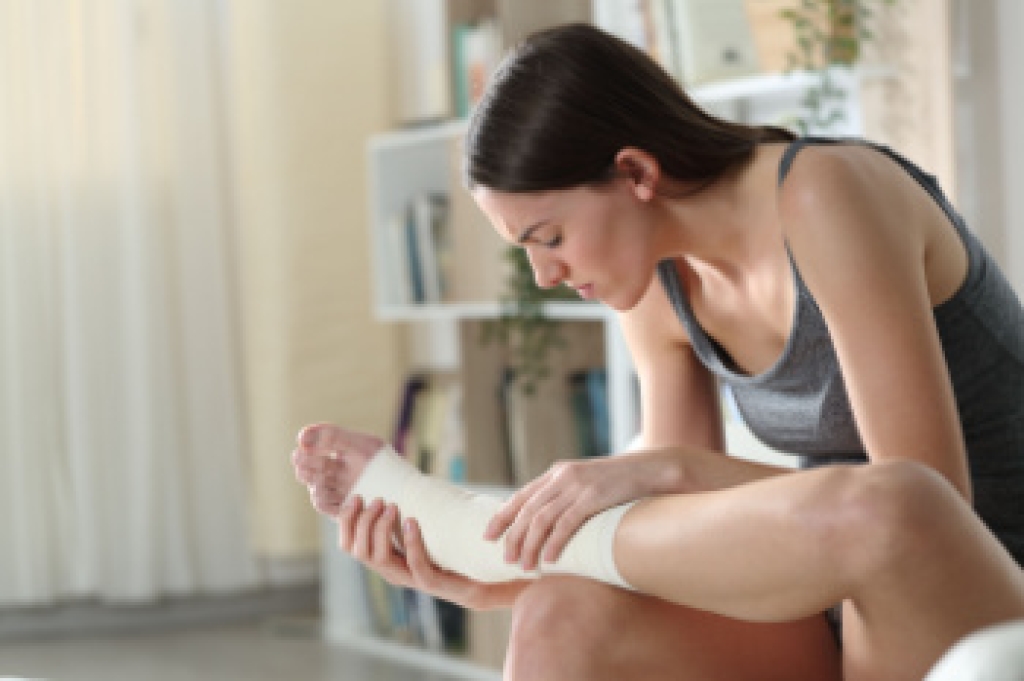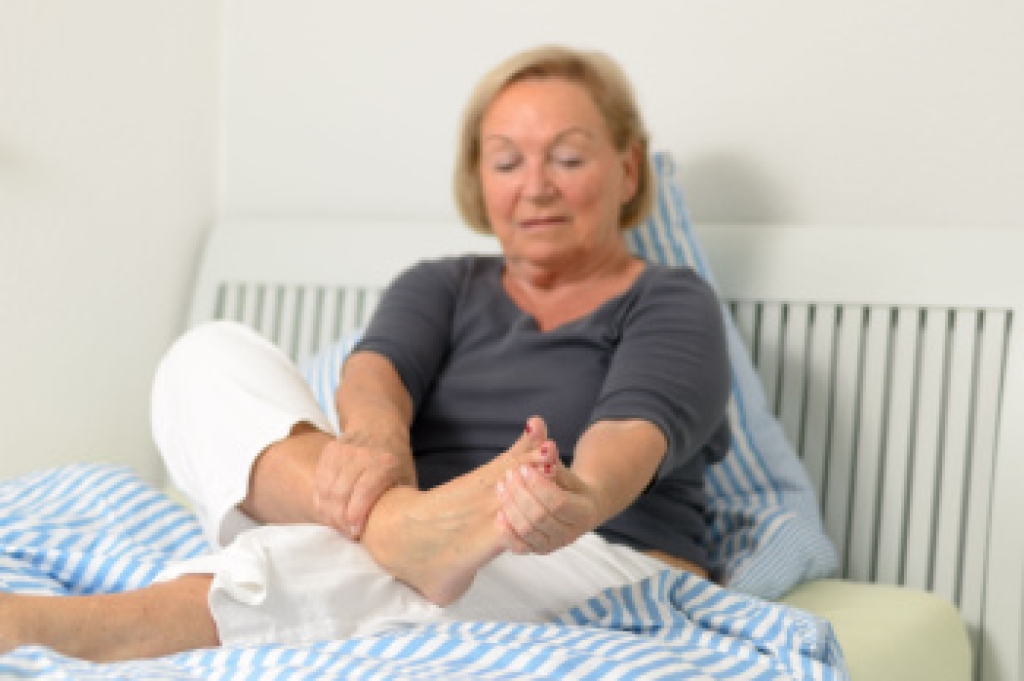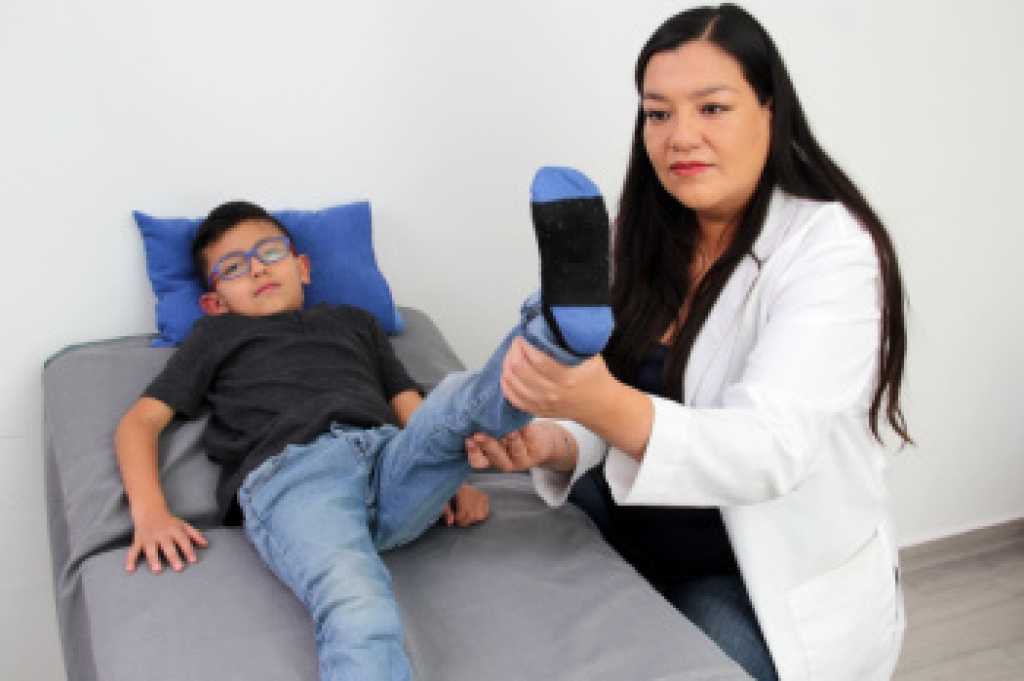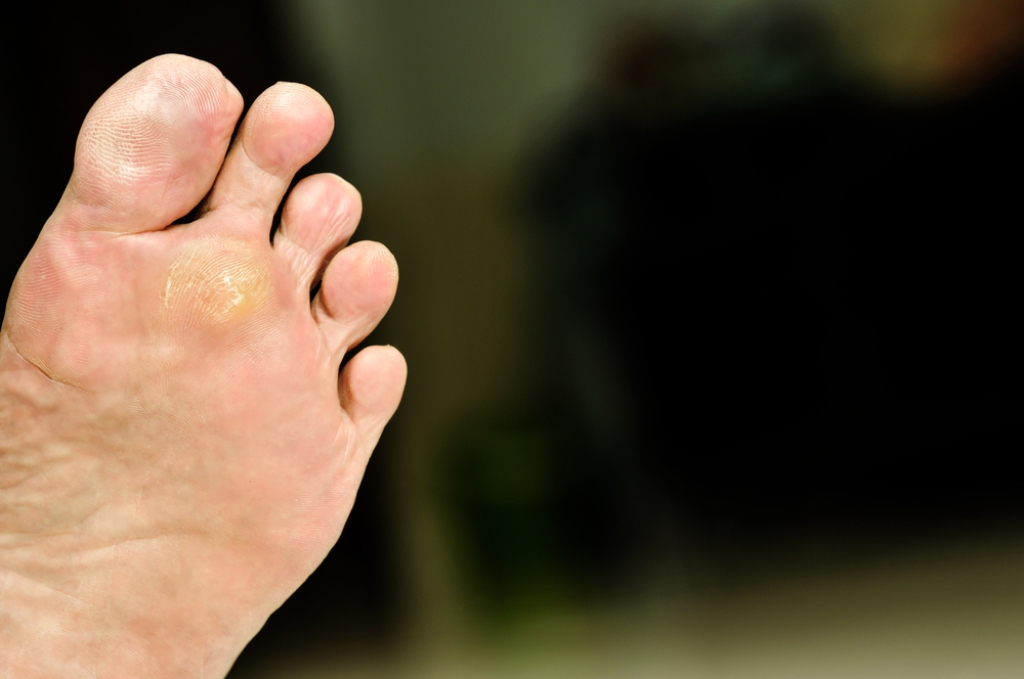Blog
Risk Factors for Developing Foot Stress Fractures

Foot stress fractures develop when repeated pressure on the bones of the feet builds faster than the body can recover. Risk increases with a sudden increase in activity, such as adding distance, speed, or training days too quickly. Moving from softer ground to harder surfaces raises impact through the toes, midfoot, and heel. Foot problems like bunions or blisters can change how weight is placed, forcing one bone to absorb extra stress. Shoes lacking adequate support, poor fit, stiffness, or heavy wear increase strain, especially during long-term walking or standing. Flip-flops can worsen this effect. Sports that involve running, jumping, or quick direction changes raise the risk of stress fractures, but extended walking on uneven ground can also lead to problems. Bone weakness and a prior stress fracture further increase risk. For help with foot problems, it is suggested that you consult a podiatrist for an exam and treatment.
Stress fractures occur when there is a tiny crack within a bone. To learn more, contact Wendy K. Stinson, DPM from New Jersey. Our doctor can provide the care you need to keep you pain free and on your feet.
How Are They Caused?
Stress fractures are the result of repetitive force being placed on the bone. Since the lower leg and feet often carry most of the body’s weight, stress fractures are likely to occur in these areas. If you rush into a new exercise, you are more likely to develop a stress fracture since you are starting too much, too soon. Pain resulting from stress fractures may go unnoticed at first, however it may start to worsen over time.
Risk Factors
- Gender – They are more commonly found in women compared to men.
- Foot Problems – People with unusual arches in their feet are more likely to develop stress fractures.
- Certain Sports – Dancers, gymnasts, tennis players, runners, and basketball players are more likely to develop stress fractures.
- Lack of Nutrients – A lack of vitamin D and calcium may weaken the bones and make you more prone to stress fractures
- Weak Bones – Osteoporosis can weaken the bones therefore resulting in stress fractures
Stress fractures do not always heal properly, so it is important that you seek help from a podiatrist if you suspect you may have one. Ignoring your stress fracture may cause it to worsen, and you may develop chronic pain as well as additional fractures.
If you have any questions please contact our office located in Parsippany-Troy Hills, NJ . We offer the newest diagnostic and treatment technologies for all your foot and ankle needs.
Gout in Women and Podiatric Treatment

Gout is a form of inflammatory arthritis caused by a buildup of uric acid crystals within a joint, most often affecting the big toe, foot, and ankle. Although commonly associated with men, women can also develop gout, especially after menopause when protective hormone levels change. Symptoms typically include sudden onset of intense joint pain, swelling, redness, warmth, and stiffness, often beginning in the big toe. Causes may include genetics, diet, dehydration, kidney function changes, and certain medications. A podiatrist can help by diagnosing gout through a clinical evaluation, managing acute flare ups, reducing joint inflammation, and providing guidance on footwear and lifestyle modifications to protect the feet. If you develop sudden pain in your big toe, it is suggested that you promptly schedule a podiatry appointment to receive a proper evaluation and personalized care.
Gout is a painful condition that can be treated. If you are seeking treatment, contact Wendy K. Stinson, DPM from New Jersey. Our doctor will treat your foot and ankle needs.
What Is Gout?
Gout is a form of arthritis that is characterized by sudden, severe attacks of pain, redness, and tenderness in the joints. The condition usually affects the joint at the base of the big toe. A gout attack can occur at any random time, such as the middle of the night while you are asleep.
Symptoms
- Intense Joint Pain - Usually around the large joint of your big toe, and it most severe within the first four to twelve hours
- Lingering Discomfort - Joint discomfort may last from a few days to a few weeks
- Inflammation and Redness -Affected joints may become swollen, tender, warm and red
- Limited Range of Motion - May experience a decrease in joint mobility
Risk Factors
- Genetics - If family members have gout, you’re more likely to have it
- Medications - Diuretic medications can raise uric acid levels
- Gender/Age - Gout is more common in men until the age of 60. It is believed that estrogen protects women until that point
- Diet - Eating red meat and shellfish increases your risk
- Alcohol - Having more than two alcoholic drinks per day increases your risk
- Obesity - Obese people are at a higher risk for gout
Prior to visiting your podiatrist to receive treatment for gout, there are a few things you should do beforehand. If you have gout you should write down your symptoms--including when they started and how often you experience them, important medical information you may have, and any questions you may have. Writing down these three things will help your podiatrist in assessing your specific situation so that he or she may provide the best route of treatment for you.
If you have any questions, please feel free to contact our office located in Parsippany-Troy Hills, NJ . We offer the newest diagnostic and treatment technologies for all your foot care needs.
The Importance of Child Foot Care

Proper foot care during childhood supports healthy growth of the feet, toes, and ankles and helps guide normal movement as a child becomes more active. Babies and young children rely on flexible, developing bones and soft tissues that respond to pressure, footwear, and activity levels. Watching for changes such as inward or outward turning of the feet, persistent toe-walking, or frequent tripping can help identify concerns early. Shoes that lack adequate support, including flip-flops, can create problems if they are worn for long periods, especially once a child begins walking outdoors. Footwear should allow room for the toes to move and match the natural shape of the foot to reduce the risk of pain or deformity. A podiatrist can evaluate a child’s gait, identify early structural issues, and guide care when symptoms affect walking or activity. If your child is exhibiting foot or mobility problems, it is suggested that you make an appointment with a podiatrist for a diagnosis and treatment.
The health of a child’s feet is vital to their overall well-being. If you have any questions regarding foot health, contact Wendy K. Stinson, DPM of New Jersey. Our doctor can provide the care you need to keep you pain-free and on your feet.
Tips for Keeping Children's Feet Healthy
- Make sure their shoes fit properly
- Look for any signs of in-toeing or out-toeing
- Check to see if they have Clubfoot (condition that affects your child’s foot and ankle, twisting the heel and toes inward) which is one of the most common nonmajor birth defects.
- Lightly cover your baby’s feet (Tight covers may keep your baby from moving their feet freely, and could prevent normal development)
- Allow your toddler to go shoeless (Shoes can be restricting for a young child’s foot)
- Cut toenails straight across to avoid ingrown toenails
- Keep your child’s foot clean and dry
- Cover cuts and scrapes. Wash any scratches with soap and water and cover them with a bandage until they’ve healed.
If you have any questions, please feel free to contact our office located in Parsippany-Troy Hills, NJ . We offer the newest diagnostic and treatment technologies for all your foot care needs.
Identification and Healing of Plantar Warts

A plantar wart is a small growth on the bottom of the foot caused by the human papillomavirus, or HPV. These warts can be painful when pressure is applied and may have a rough, grainy surface. Signs that a plantar wart is healing include the disappearance of the lump, absence of black dots, and reduced or no pain while walking or standing. Proper evaluation is essential, as warts can resemble other foot conditions. A podiatrist can provide effective treatments such as topical medications, cryotherapy, other targeted therapies, or minor surgical removal to eliminate the wart and prevent recurrence. Early intervention ensures faster recovery, protects surrounding tissue, and reduces discomfort. If you have developed a plantar wart, it is suggested that you consult a podiatrist who can offer effective treatment solutions.
Plantar warts can be very uncomfortable. If you need your feet checked, contact Wendy K. Stinson, DPM from New Jersey. Our doctor will assist you with all of your foot and ankle needs.
About Plantar Warts
Plantar warts are the result of HPV, or human papillomavirus, getting into open wounds on the feet. They are mostly found on the heels or balls of the feet.
While plantar warts are generally harmless, those experiencing excessive pain or those suffering from diabetes or a compromised immune system require immediate medical care. Plantar warts are easily diagnosed, usually through scraping off a bit of rough skin or by getting a biopsy.
Symptoms
- Lesions on the bottom of your feet, usually rough and grainy
- Hard or thick callused spots
- Wart seeds, which are small clotted blood vessels that look like little black spots
- Pain, discomfort, or tenderness of your feet when walking or standing
Treatment
- Freezing
- Electric tool removal
- Laser Treatment
- Topical Creams (prescription only)
- Over-the-counter medications
To help prevent developing plantar warts, avoid walking barefoot over abrasive surfaces that can cause cuts or wounds for HPV to get into. Avoiding direct contact with other warts, as well as not picking or rubbing existing warts, can help prevent the further spread of plantar warts. However, if you think you have developed plantar warts, speak to your podiatrist. He or she can diagnose the warts on your feet and recommend the appropriate treatment options.
If you have any questions, please feel free to contact our office located in Parsippany-Troy Hills, NJ . We offer the newest diagnostic and treatment technologies for all your foot care needs.

